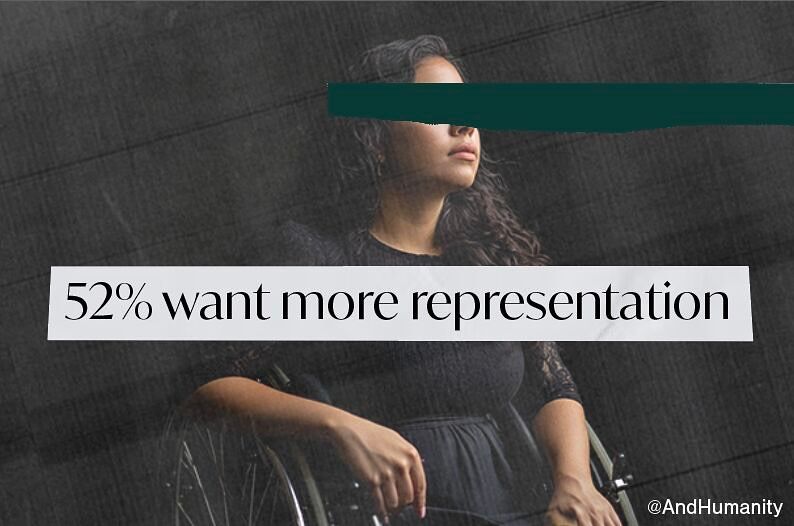Over the past year, we have seen diversity, equity and inclusion (DEI) programs be under scrutiny. This isn’t anything new – DEI programs have been researched, dissected and vilified since businesses and lawmakers initially incorporated these programs and initiatives well over a few decades ago. This largely stems from a lack of understanding that DEI efforts aren’t designed to benefit some groups to the detriment of others. However, in truth, these efforts are beneficial for everyone. Yet far-right conservatives have escalated attacks on these programs and initiatives following Donald Trump’s win during the 2024 US presidential election, and we have seen corporations continue to withdraw their DEI initiatives since the US Supreme Court ended affirmative action for university admissions in June 2023.
However, recent data shows us that withdrawing from inclusive marketing and DEI initiatives is actually a bad business decision. For example, based on a recent study by UM, the global media agency network of IPG Mediabrand:
- Purchase intent more than doubles when socially conscious brands engage advertising media partners that share common values.
- When a brand embodies three core values—integrity, sustainability and equity—purchase intent rises by 75%.
- Brands that score low on responsibility metrics cannot simply improve their performance by simply working with media partners that hold higher responsibility metrics; rather, brands must authentically evolve their practices and commitment to social values to see increased results.
Additionally, Unstereotype Alliance recently released a report stating that brands with more inclusive advertising practices benefit by:
- selling more (3.46% higher shorter-term sales and 16.26% higher longer-term sales)
- being considered and trialed more (33% higher strong consideration, 62% higher likelihood of being a consumer’s first choice, and 8% higher incidence of being trialed)
- garnering higher customer loyalty (23% lower chance of being abandoned after trial and 15% higher loyalty)
- being valued greater by consumers (54% higher pricing power)
- having higher brand equity (8.3% more meaningful, 12.1% more different, and 9.4% higher salience).
So what does this all mean? Consumers—especially the youngest generations—are expecting more from organizations and their brands than just surface-level marketing. Rather, they are questioning whether a brand authentically supports diversity and inclusion both publicly and behind the scenes. That means the brand’s marketing needs to align with their audience’s perceived values of the brand. If a brand’s audience perceives the brand as promoting inauthentic inclusion, this can result in severe damage to the brand in terms of public perception, revenue and internal morale.
In fact, research has also shown that:
- “65% of consumers strongly agree/agree that representation and culture should be present in brands’ marketing efforts”
- “if [a brand] backtracks from a social cause [a consumer] believe[s] in, 70% of consumers cite they would immediately stop purchasing or would only continue to purchase until they find a brand that is more supportive of a social cause in which they believe. The likelihood that they come back is slim to none.
And all these statistics are backed up by actual performance results of inclusive campaigns. Take for example, E45’s trans-inclusive campaign (commercial below) which helped them achieve 3 major marketing goals:
- Regaining Consumer Attention: E45 emerged as a modern, inclusive brand, getting noticed by our customers with a year-on-year increase in Ad Awareness (+77%) and Attention (+28%), making E45 the brand with the largest Advertising Awareness increase in the UK for June 2024, according to YouGov. (Source: YouGov Brand Index, 17/05 – 16/07 ‘23)
- Increased Relevance: The campaign resonated strongly with younger audiences who the brand had been struggling to recruit, becoming part of conversations again with an increase in Positive Buzz (+64%) and Positive Reputation (+23%) among 18-34 year olds. (Source: YouGov Brand Index, 17/05 – 16/07 ‘23)
- Business Growth: The campaign positively impacted E45’s bottom line. We saw a surge in Purchase Intent across all audiences (+28%). Sales on Amazon, a platform favoured by younger consumers, increased during the campaign’s six-week period by +46%. As the campaign is still in its early stages, we anticipate further growth in these metrics in the coming months. (Source: YouGov Brand Index, 17/05 – 16/07 ‘23 vs ‘24 & Amazon Data 17/05/24 – 30/06/24 (campaign period).
Therefore, DEI is not just a need coming from equity-deserving communities. Rather, it benefits everyone. Inclusive marketing and DEI are a necessity for long-term business viability, and a company that doesn’t prioritize DEI is determined to become obsolete in the eyes of modern consumers.
Let’s be clear – withdrawing from inclusion initiatives is a trend that will not remain for long. But what will remain is consumers’ memories of the companies and brands that have supported the minimization of inclusive marketing and DEI. What isn’t a fad is the need to include all consumers in culturally relevant ways. Doing so will maximize your brand’s reputation and fiscal growth. While what we call DEI efforts may change, the sentiment – representative and inclusive brands, values and marketing – will remain.
So, here’s our advice to all forward-thinking marketing leaders reading this article; don’t let fear dictate your decision-making when all the statistics prove otherwise. Just because a lot of these “anti-woke” people are often the loudest in the room, it doesn’t mean they’re right. Stay the course and know that the majority of audiences want inclusion integrated into your brand and marketing strategies. This is the reality now and in the future, whether or not everyone sees it.
Learn more about what we do and who we do it for on our services page.
Sign up for our newsletter here for more insights on marketing, advertising, communications, and how the industry intersects with inclusion.









